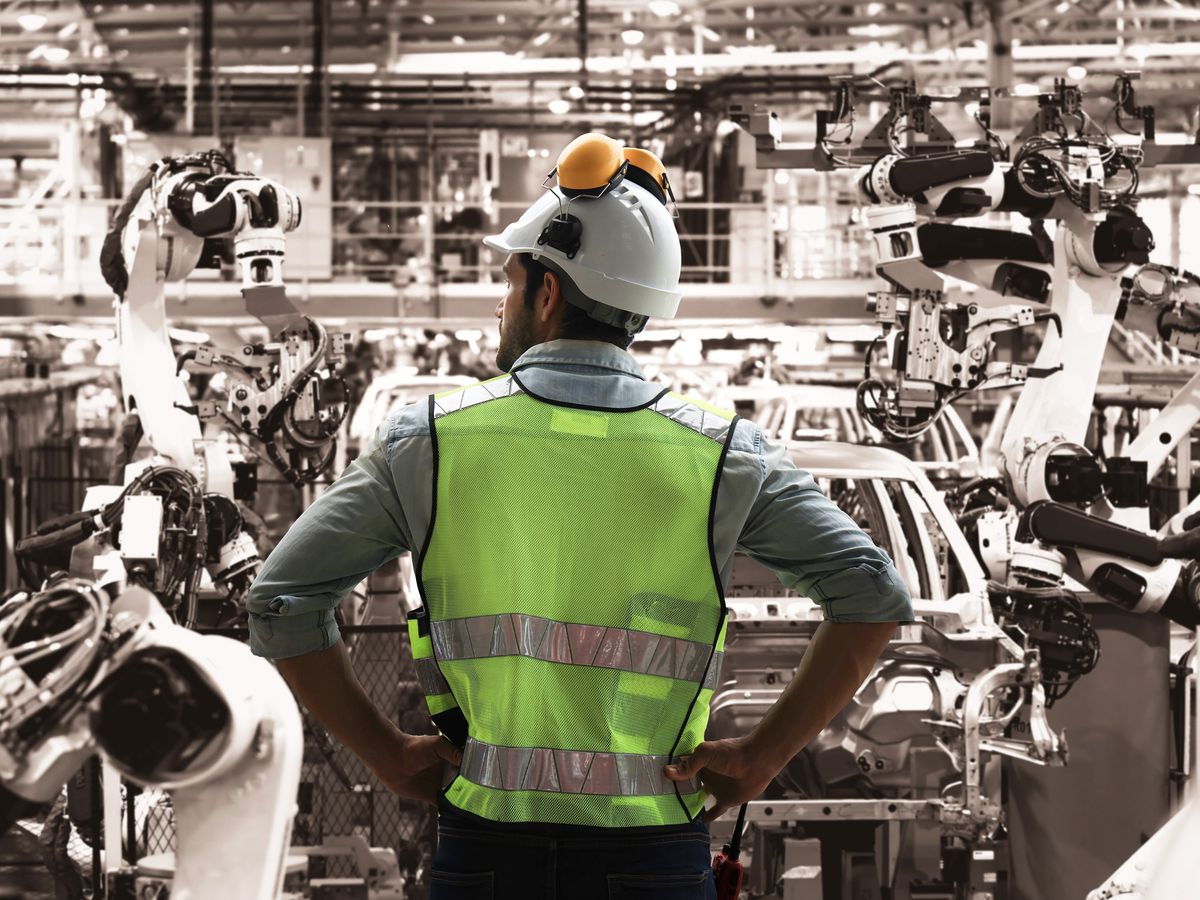Amid the battle against climate change, there’s an important and growing effort to address the potential job loss created by the decline of the fossil fuel industry. What’s been less considered, however, is how the energy transition might impact people working in adjacent industries, including car manufacturing, steel manufacturing, and mining.
“Engineers often work inside of manufacturing firms,” explains Christopher Knittel, an applied economics professor at the MIT Sloan School of Management. He says his goal ultimately is to make the transition more smooth by shining a light on a range of impacted jobs, including, he says, “potentially engineering jobs that now need to replace the fuel that they use to make their final product.”
Now, new research from Knittel and Kailin Graham, published 5 February in PNAS, highlights the risk that policymakers looking to accelerate the green energy transition will inadvertently leave out certain workers and communities.
“This is and will be a common issue for many countries, and it will be difficult to protect all workers during the world’s transition to renewable energy.” —Patrick Penfield, Syracuse University
The researchers focused on certain funding allocations in the Inflation Reduction Act—a major legislative package that, among other goals, is meant to accelerate the adoption of battery, solar, and other green energy technologies. Comparing that legislation to their own calculations, the MIT team found that the federal package wasn’t fully considering all the sectors that could be impacted. Now, the methodology that resulted from their research, the academics argue, reveals the far-reaching consequences that the transition could have for many types of jobs.
“How can we incentivize those engineers to shift to less carbon-intensive ways to build their products and not lose their jobs completely?” Knittel says. As an example, he pointed to electric vehicles: While legislation might encourage consumers to buy more EVs, there isn’t necessarily the same pressure for plants manufacturing internal combustion engines to switch to EV battery manufacturing.
The researchers sought to determine how vulnerable jobs in a given area might be amid a pivot to green energy. Knittel and Graham looked at different counties in the United States (mostly using public data), based on industries including gas extraction, construction, and manufacturing, to calculate an “employment carbon footprint.” Ultimately, that number is based on each U.S. county’s exposure to fossil fuel, per employee, measured in metric tons of carbon dioxide. The goal was to capture not just the direct use of fossil fuels, but also indirect consumption, like electricity used by a mining company or car manufacturing plant, and generated from fossil fuels.
“Manufacturing generally is energy dependent,” Knittel says. “Making metals is obvious, making cars. But also if I’m just making vacuum cleaners, or anything that uses a lot of energy, the core business is going to feel the potential burdens from this transition.”
The primary innovation of the paper, says Knittel, was figuring out how to adjust for the fact that the carbon embedded in a barrel of oil travels and is ultimately used across several places. The results are now viewable online on a digital map, courtesy of the MIT Center for Energy and Environmental Policy Research.
“If I’m just making vacuum cleaners, or anything that uses a lot of energy, the core business is going to feel the potential burdens from this transition.” —Christopher Knittel, MIT
The stakes are high. Right now, the process of moving American manufacturers to green energy is slow, notes Patrick Penfield, a supply chain management professor at Syracuse University, and companies may need government legislation or more favorable financial incentives to transition from fossil fuels. Still, he warns that the issue of displaced workers dependent on carbon-intensive industries isn’t just a phenomenon expected in the US.
“This is and will be a common issue for many countries, and it will be difficult to protect all workers during the world’s transition to renewable energy,” Penfield says. “History has shown that with previous seismic innovations and changes, workers have been adversely impacted. “
Engineers employed in non-renewable energy fields should expect the industry to shrink over the next two decades, Penfield says. While engineers, like those in IT, should be able to transition to other industries, engineers working directly on fossil fuels will possibly need to be retrained to work in renewable energy or other areas.
“The ‘tipping point’ for the loss of these fossil fuel engineering jobs will come when the price of fossil fuels and regulations increase over the cost of switching to renewable energy,” Penfield says.
- How EVs Are Reshaping Labor Markets ›
- For U.S. Jobs Creation, Renewables Are a Better Bet Than Coal ›
Rebecca Heilweil is a journalist focusing on emerging technology and technology policy. She has written for Wired, the Wall Street Journal, and Slate, among other outlets.
To find her elsewhere: https://twitter.com/rebheilweil



